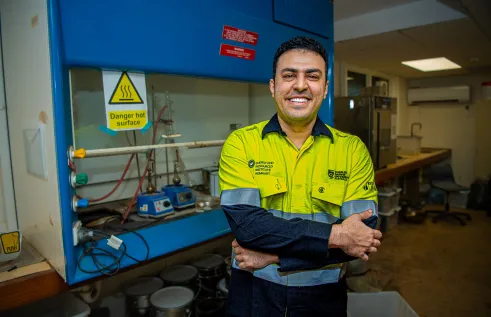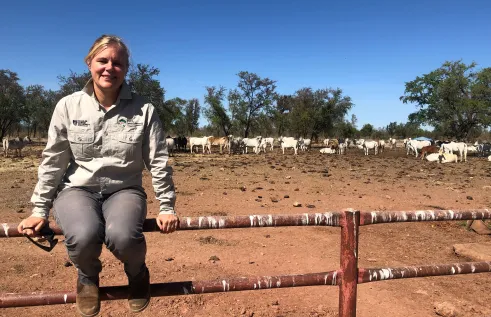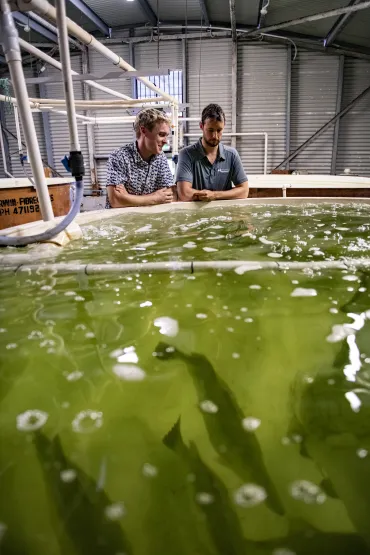News Article
New research explains why barramundi switch sex
New research from a Charles Darwin University PhD candidate has found the timing of the sex-switching in barramundi is more related to size than age.
Most barramundi are sequential hermaphrodites – starting their lives as males before switching to being female later in life.
Research undertaken by CDU PhD candidate Brien Roberts has discovered that a faster-growing barramundi will change sex at a younger age.
“Most barra start their lives as males, then switch to being female later in life – that’s why most of the big ‘meterys’ are female,” Mr Roberts said.
“These big females are by far the most valuable breeders in the population.
“There’s limited evolutionary benefit to being a small female barramundi, because a larger female can produce a greater number of eggs, and will be much more successful at passing on her genes.”
Mr Roberts said his research showed that the timing of the sex-switching in barramundi is more related to size than age.
“A faster-growing barra will change sex at a younger age than a slower-growing fish, because it will reach the ‘threshold’ size faster,” he said.
“Changing to female at a younger age means that a fish spends more of its life being female – and more time producing baby barra.”
The research studied barramundi caught in Western Australia’s Fitzroy River, but the results apply to barramundi across all of Australia’s tropical northern rivers, including in the Ramsar-listed Kakadu wetlands.
Besides being the Top End’s most prized angling fish, barramundi are also highly valued by Traditional Owners for food and cultural reasons.
The Top End has experienced its best wet season in almost five years, with rainfall across the NT between October 2020 and February 2021 around 32 per cent above the long-term average, the highest since 2016–17.
A bumper wet season will spell good news for the Northern Territory’s barramundi population.
Mr Roberts said the healthy drenching was keeping river flows intact and allowing floodplains to flood more often, ensuring healthy barra populations for the future.
“The age at which barramundi mature as females depends on the environmental conditions they experience as a juvenile fish,” he said.
“Big wet seasons ensure good food and good habitat for juvenile barra, letting them grow and mature faster, turn into females sooner, and produce more baby barra for the future.”
The research is funded by the Australian Government’s National Environmental Science Program through the Northern Australia Environmental Resources Hub. It also involved scientists from the University of Melbourne, Murdoch University and NT Fisheries.
Charles Darwin University is actively seeking Higher Degree by Research students to take part in research projects like this. Scholarships are available. Learn more here.
Related Articles

Where rubber meets the road: Old tyres are key to building tougher roads
Almost half of the Northern Territory’s worn-out tyres end up in landfills – with the rest exported interstate for recycling – but a study led by Charles Darwin University (CDU) is repurposing the discarded rubber to build stronger, sustainable roads that meet the NT’s unique needs.
Read more about Where rubber meets the road: Old tyres are key to building tougher roads
Social media subjecting Black women to radicalised digital policing
Influencers use oppression, manipulation and weaponisation to police Black women on social media, according to new research uncovering the entrenched nature of digital racism.
Read more about Social media subjecting Black women to radicalised digital policing
Moo-ving the boundaries: New research evaluates virtual fences for use on NT cattle stations
Cattle producers in Northern Australia face unique challenges when adapting tools like virtual fences on their properties, but new research from Charles Darwin University (CDU) is set to break down the barriers to this technology.
Read more about Moo-ving the boundaries: New research evaluates virtual fences for use on NT cattle stations
